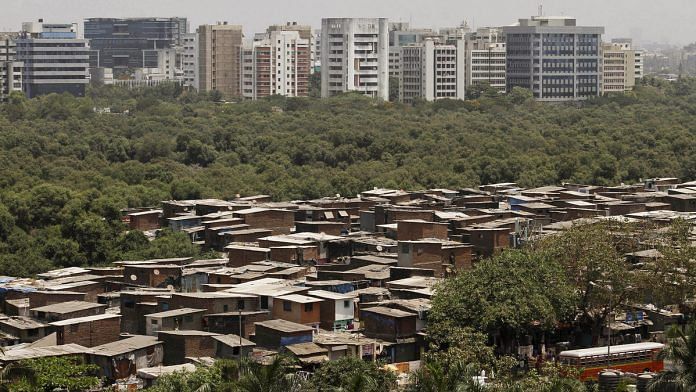New Delhi: The richest 1 per cent of Indians own 58.4 per cent of the country’s total wealth, and this wealth inequality has increased six times between 2000 and 2017, said a new report published by Oxford University Press and released by former prime minister Dr Manmohan Singh Monday.
Titled India Social Report: Rising Inequalities, the report has been prepared by Council of Social Development (CSD), a research institute with centres in Delhi and Hyderabad.
The report said 10 per cent of richest Indians own 80.7 per cent of the country’s total wealth. The share of the richest 1 per cent in national income stood at 22 per cent in 2015, as opposed to just 6 per cent in the early 1980s, it stated.
Speaking on the challenges posed by rising wealth inequality, Singh, who is also an eminent economist, said, “Equity is complementary to the pursuit of long-term prosperity… and we need a level-playing field where all members of society have a similar chance of becoming economically productive, socially active and politically influential.”
While accepting that a fast-growing economy gives rise to inequalities, the former PM said the process of reducing inequality should not be seen as different from the process of economic growth.
“Meaningful solutions to problems of poverty can only be found within the framework of a rapidly growing economy,” he said.
The findings
The report, edited by CSD professor T. Haque and former professor of University of Hyderabad D. Narasimha Reddy, has 22 chapters written by well-known economists and social scientists. It covers various dimensions of inequality ranging from regional to sectoral.
The rising inequality has an important sectoral dimension, said the report. In states such as Bihar, Chhattisgarh and Jharkhand, the income of each worker in non-agricultural sectors is six to eleven times higher than those working in the agricultural sector.
At an all-India level too, the income in non-agricultural sector is almost five times higher than that in the agricultural sector.
The report also contained an index of social development. Top performers in the list included Kerala, Punjab, Himachal Pradesh, Sikkim and Goa, while Assam, Bihar, Chhattisgarh, Odisha and Uttar Pradesh rank on the lower side.
Report’s findings based on ‘outdated data’
Former member of the Planning Commission Dr Abhijit Sen, who was present during the release of the report, said the essays have probably been written by the best people in their specific areas in the country.
He, however, said a report such as this should “also have an agreed viewpoint on what we need to do about the problems”. In this report, such suggestions are mostly restricted in the opening note and the editors’ introduction, he added.
He also said a lot of the report’s findings are based on outdated data. This, he said, however, is largely due to the difficulties, which have presented themselves in acquiring data in the last five years.
Also read: Indian elites holding back wealth tied in slums. And here’s what Modi govt can do







“Meaningful solutions to problems of poverty can only be found within the framework of a rapidly growing economy,”
This is not a solution at all. It does not reduce poverty, as the money gets syphoned to the rich anyway, plus – and even more importantly – unlimited growth on a finite planet is impossible and destructive to a point where it causes a mass extinction event, which sooner rather than later will include homo sapiens. Currently we’re already losing around 100 species of plants, insects and animals every single day.
We need real solutions. The best I’ve found so far is a (Natural Law/) Resource Based Economy, as suggested by The Venus Project, The Zeitgeist Movement, and others. Watch “Zeitgeist Moving Forward” on Netflix or YouTube to see why the world is as it is and above mentioned solution.
A better world IS possible.
These are the systemic results of globalization n opening up the economy in the favour of richest in the country , and allowing them to loot as much as they can, inequalities have increased many fold due to the disastrous economic policies made N followed over the dictats of America, n west.sacrificing our agrarian economy at the cost of industrial one ,that to indigenous growth engine is made to suffer, inorder to benefit MNCs,corporates,world bank,adb, etc.
Economic polisies of congress n bjp remain the same n proved to be disastrous.
Development n it’s meaning were truly for select riches N not for masses.Unfortunately indian leaders from both parties had bluffed the country men, N showed false n misleading narrations about development.
If there is development then why it could reach to only 1% rich only, N why not equally to most indians??Ruling govt.had been cheating the citizens of this country with rule of Power, by misusing it in favour of those 1% rich who accumulated so much of wealth.